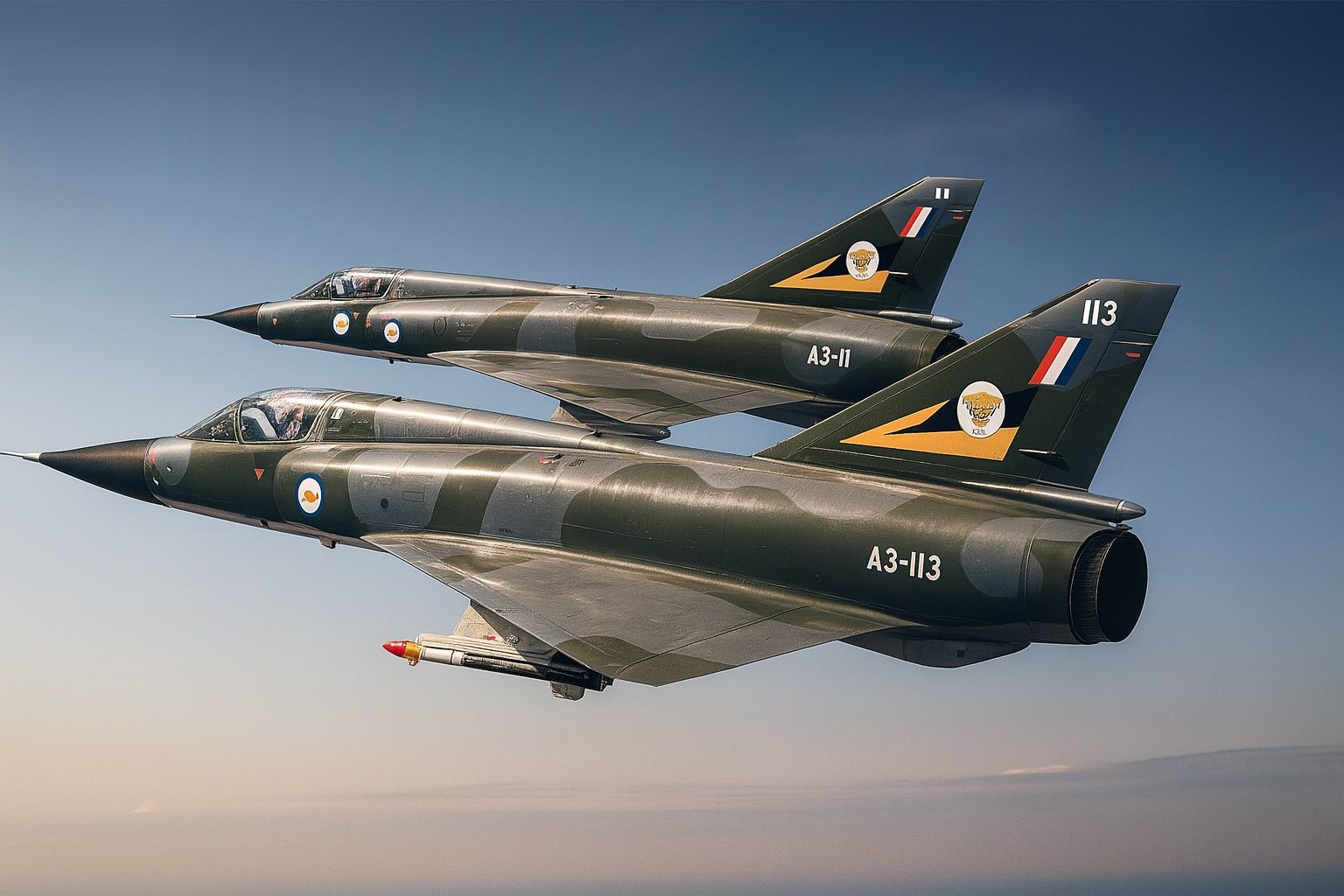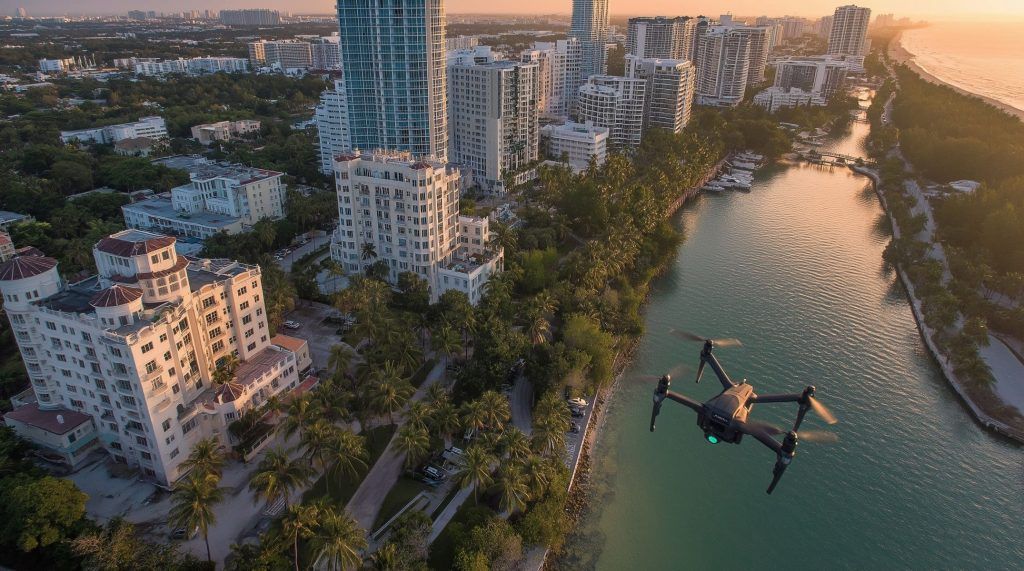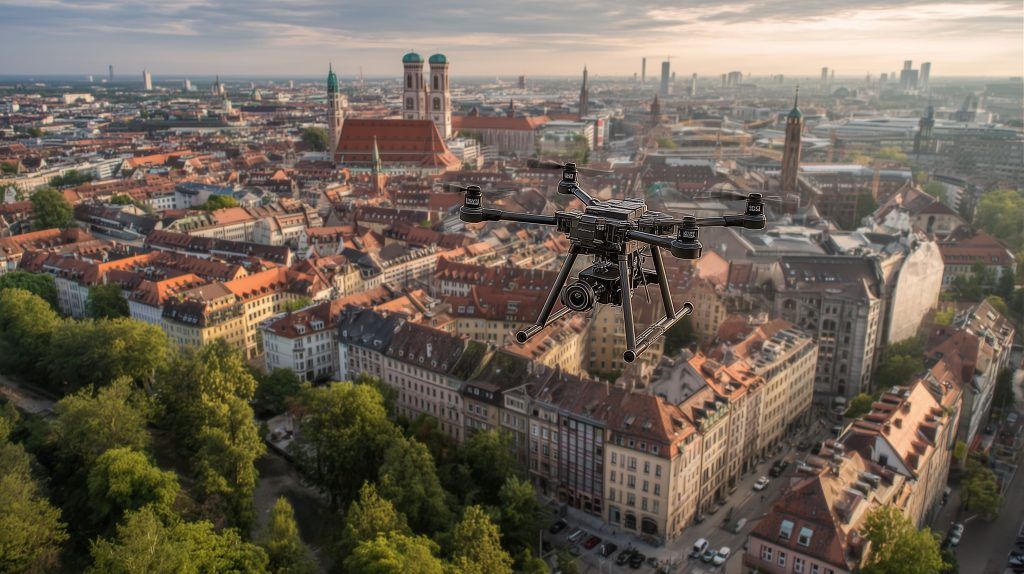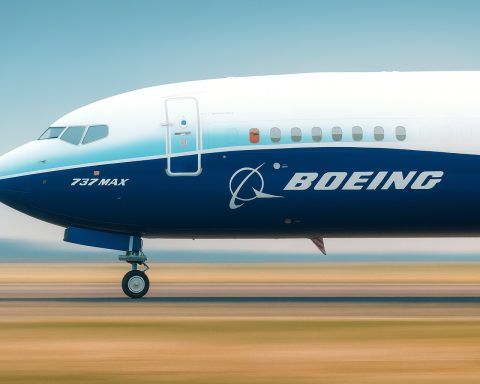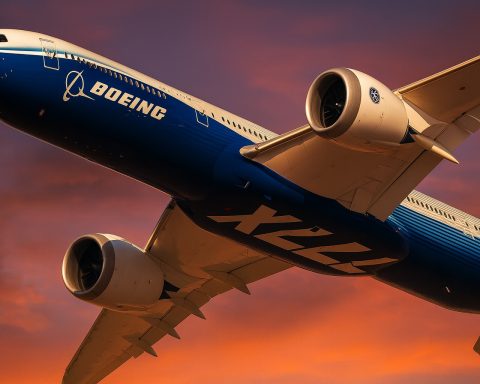- In 1958, the Mirage III became the first Western European combat aircraft to exceed Mach 2 in level flight.
- The Mirage IIIC entered French service by 1961.
- The Mirage F1 first flew in 1966 and could land about 60 knots slower than the Mirage III.
- The Mirage 2000 first flew in 1978 and introduced fly-by-wire control with the Snecma M53-P2 engine delivering 64 kN dry and 95 kN with afterburner.
- The Mirage 4000 first flew in 1979 as a twin-engine “Super Mirage” with canards and a potential load up to 8 tons, but only one prototype was built and it now resides in a museum.
- The Mirage III/5/50 family totaled 1,401 airframes built in over 90 variants and served in 21 countries.
- Mirage F1 production totaled 726 aircraft, with 476 exported to about 11 countries.
- Around 600 Mirage 2000s were built between 1978 and 2007, with eight export customers including India, UAE, Taiwan, Greece, Egypt, Qatar, Brazil, and Peru.
- In the Falklands War of 1982, Argentine Mirage IIIEAs and Israeli Nesher Daggers attacked British ships but endured limited endurance, with Mirages on station for about five minutes due to range constraints.
- In 2024–25 France donated retired Mirage 2000-5F fighters to Ukraine; by early 2025 the first aircraft arrived, armed with MICA missiles and Scalp-EG cruise missiles.
The Dassault Mirage family of fighter jets – from the early Mirage III through the Mirage F1, Mirage 2000, and the ambitious Mirage 4000 – represents one of the most storied lineages in aviation. These French delta-wing warriors carved out a legendary reputation for speed, versatility, and global impact. Born in the Cold War, the Mirage jets combined elegant engineering with ruthless efficacy, seeing combat on multiple continents and serving in dozens of air forces. Today, we’ll explore their historical development, technical evolution, battlefield exploits, global operators, and the strategic legacy of the Mirage series, drawing on expert analysis and veterans’ insights.
Historical Development and Design Evolution
The Mirage saga began in the 1950s, as France sought a homegrown high-performance fighter in an era dominated by American and Soviet designs. Dassault Aviation responded with the sleek Mystère-Delta prototypes that evolved into the Mirage III – a diminutive, tailless delta-wing interceptor [1] [2]. In 1958, the Mirage III became the first Western European combat aircraft to exceed Mach 2 in level flight [3], a breakthrough that heralded a new age of supersonic flight. Initial models like the Mirage IIIC entered French service by 1961, and soon proved the delta-wing concept viable despite its challenges (such as high landing speeds) [4] [5].
Two Royal Australian Air Force Mirage IIIs take off in formation during a 1984 exercise, demonstrating the classic delta-wing design that gave the Mirage III its remarkable speed and climb performance [6] [7].
Design Evolution: The Mirage III’s success led to a family of variants optimized for different roles. Dassault stretched and simplified the airframe to create the Mirage 5 (based on Israeli requests for a clear-weather attack jet), and later the Mirage 50 with updated engines. By the late 1960s, however, it was clear that delta wings, while great for speed, imposed landing and maneuvering limitations. Dassault’s next major model, the Mirage F1, broke with tradition by adopting a swept wing and horizontal tailplane for better low-speed handling and shorter field performance [8] [9]. First flown in 1966, the Mirage F1 retained Mach 2+ capability but could land about 60 knots slower than the Mirage III, solving a key problem of the delta design [10] [11].
During the 1970s, Dassault also experimented with swing-wings and VTOL concepts (Mirage G and IIIV), but these exotic prototypes were shelved as focus returned to simpler, lighter fighters. The culmination was the Mirage 2000, which first flew in 1978. Remarkably, Dassault returned to the delta wing for the Mirage 2000 – but this time augmented by fly-by-wire controls and high-lift devices, yielding a far more agile and pilot-friendly machine [12] [13]. The Mirage 2000’s designers blended new technology with the “classic tailless delta configuration,” creating what analysts called “an ideal modern application” of the Mirage design philosophy [14]. This fourth-generation jet featured advanced avionics, a powerful Snecma M53 turbofan, and refined aerodynamics that vastly improved its handling and multirole capabilities [15] [16].
At the same time, Dassault eyed the high end of the market with the Mirage 4000 “Super Mirage.” This was a twin-engine, heavyweight Mirage – comparable in size to an F-15 Eagle – intended as a long-range interceptor and bomber for the 1980s [17] [18]. The Mirage 4000 first flew in 1979 and impressed with its performance, but without domestic orders (the French Air Force chose the Mirage 2000 and later the Rafale) and no foreign buyers, the project was canceled after a single prototype [19] [20]. Nonetheless, lessons from the Mirage 4000’s development would feed into Dassault’s next-generation Rafale, while the prototype itself now stands as a museum piece – a might-have-been symbol of the Mirage legacy.
Technical Specifications and Unique Features of Major Models
Each major Mirage variant introduced new technologies while retaining the lineage’s core traits of speed, simplicity, and firepower. Below, we break down the key specifications and unique features of the Mirage III, F1, 2000, 4000 (and other notable versions):
- Mirage III/5/50: Single-seat delta-wing interceptor powered by a SNECMA Atar 09C turbojet (dry thrust ~4,700 kg, 6,000+ kg with afterburner). Top speed ~Mach 2.2, ceiling over 55,000 ft. Notable for its tailless delta planform (60° sweep) which gave it high supersonic speed and climb rate – at the expense of high landing speeds (~180+ knots approach) [21] [22]. Armament typically 2× DEFA 30 mm cannons and up to 4 missiles or bombs on external pylons. The Mirage III was built in numerous variants (IIIC fighter, IIIB trainer, IIIE multirole, IIIR recon, etc.), and the simplified Mirage 5 variant optimized for ground attack (lacking radar) was exported widely. Unique feature: some early Mirage IIIs could be fitted with an auxiliary SEPR rocket engine for zoom climbs, theoretically reaching an astounding 70,000 ft – “an astonishing 70,000 feet” as one pilot recalled, though this feature saw limited use [23] [24].
- Mirage F1: Single-seat multirole fighter with a conventional swept wing and tail (a departure from the delta). Engine: upgraded SNECMA Atar 9K-50 turbojet (~7,200 kg with afterburner). Speed ~Mach 2.2, ceiling ~65,000 ft. The high-mounted wings featured leading-edge slats and flaps, enabling much improved takeoff and landing performance (landing speed ~125 knots) [25] [26]. Range was increased over the Mirage III; internal fuel and aerial refueling (on later F1 variants) extended its mission radius. It carried 2× 30 mm cannons and up to 6 missiles or bombs. Unique feature: its Cyrano IV radar and avionics made it an all-weather interceptor and strike fighter. The Mirage F1C was later adapted into reconnaissance (F1CR) and ground-attack (F1CT) versions. It was a rugged, “pilot’s airplane” – manual flying, no fly-by-wire, but highly appreciated by its users for reliability and good performance across a range of mission profiles.
- Mirage 2000: Single-seat (with two-seat variants) fourth-generation multirole fighter, returning to a refined delta-wing design. Powerplant: SNECMA M53-P2 turbofan (64 kN dry, 95 kN with afterburner) [27]. Maximum speed >Mach 2.2, service ceiling ~60,000 ft. Key advances included fly-by-wire control, a computerized flight control system that allowed relaxed stability and superior agility – a vast improvement in instantaneous turn and low-speed handling over earlier Mirages [28] [29]. The Mirage 2000 pioneered CCV (control-configured vehicle) design in a delta jet, resulting in carefree handling. It could carry 2× internal 30 mm cannons and nine external hardpoints for missiles, bombs, and drop tanks [30] [31]. Avionics included the multimode Thales RDM/RDY radar (in later -5 variant) and a modern cockpit with HUD and HOTAS controls. Unique features: its combination of delta wing and fly-by-wire gave it both high-speed performance and the ability to land at a more moderate speed (~150 knots, much lower than Mirage III) – marrying the benefits of the delta with 1980s technology [32] [33]. Specialized variants like the Mirage 2000N carried nuclear cruise missiles for France’s deterrent, while the 2000D was an optimized all-weather strike platform.
- Mirage 4000: Twin-engine high-performance prototype (often called “Super Mirage 4000”). It was roughly 2× the size of a Mirage 2000, powered by 2× SNECMA M53 turbofans (each ~95 kN in afterburner). Estimated speed ~Mach 2+ and long range with internal fuel. It sported small canard foreplanes in addition to its large delta wing [34], for improved maneuverability. Designed with F-15 class performance, it could have carried a heavy weapons load (up to 8 tons) on numerous hardpoints. Unique feature: The Mirage 4000 demonstrated Dassault’s ability to scale the delta design into a twin-engine, high-thrust interceptor. Despite successful flight tests, only one was built; it now resides at the French Air & Space Museum in Le Bourget [35] [36] – a testament to French innovation that was never put into service.
Other noteworthy Mirage variants include the Mirage IIIV (a VTOL experimental fighter that proved too complex) and the Mirage G (a swing-wing prototype). While these never entered production, they influenced later designs. Additionally, foreign derivatives like the IAI Nesher/Kfir (an Israeli-built Mirage 5 with a new engine and avionics) and South Africa’s Atlas Cheetah (upgraded Mirage III airframes with modern systems) extended the Mirage’s legacy into the 1990s and beyond [37].
Operational History in Various Conflicts
Few fighter jets have seen such widespread combat usage as the Mirage series. From the Middle East to Latin America to South Asia, Mirages have dueled MiGs, defended skies, and delivered decisive strikes:
- Middle East (Arab–Israeli Wars): Perhaps the Mirage’s most famous trial by fire came with the Israeli Air Force. Israel’s Mirage IIICJ fighters (locally nicknamed “Shahak”) formed the sharp end of Operation Focus in the 1967 Six-Day War, sweeping the skies of enemy aircraft. Israeli Mirages achieved astonishing kill ratios against Egyptian and Syrian MiGs, and later proved their prowess in the 1973 Yom Kippur War, excelling in dogfights as high-altitude air superiority fighters [38]. Notably, Israel’s highest-scoring ace, Giora Epstein, scored all of his 17 aerial victories in Mirage IIIs or the Mirage 5-derived Nesher [39]. The IAF’s experience cemented the Mirage III’s reputation as a lethal dogfighter in skilled hands. (Due to a post-1967 French arms embargo, Israel couldn’t buy more Mirages, so it developed the Nesher and later Kfir – essentially Mirage variants – to maintain its edge.)
- Indo-Pakistani and South Asian Conflicts: India and Pakistan both turned to Mirages, adding a new chapter to the jets’ combat record. The Pakistan Air Force acquired Mirage III and 5 fighters from 1968 onwards, using them for strike and interceptor roles. In the 1999 Kargil War, the Indian Air Force famously deployed Mirage 2000s to conduct pinpoint bombing of high-altitude targets. The accuracy and reliability of India’s Mirage 2000 (carrying laser-guided bombs) were credited with turning the tide in that conflict – a point of pride that led India to upgrade and retain its Mirage fleet decades longer. Fast-forward to 2019, and Indian Mirage 2000s were again in headlines after executing an airstrike on a terrorist camp in Balakot, Pakistan, showcasing that even older Mirages could deliver precision strikes in contested airspace.
- Africa (Border Wars and Beyond): In the 1970s-80s, the Mirage III and F1 saw extensive combat in Africa. The South African Air Force (SAAF) operated both types in the Border War in Angola/Namibia. SAAF Mirage IIIs and Mirage F1s frequently tangled with Cuban-flown MiG-21s and MiG-23s. In one 1981 engagement, a South African Mirage F1CZ scored a noted kill on an Angolan MiG-21, demonstrating the F1’s capable radar and weapons. However, the introduction of faster MiG-23s posed challenges, and an F1 was lost in a 1986 dogfight. Overall, Mirages gave the SAAF a technological edge for much of the conflict. Elsewhere on the continent, Libya used Mirage F1s (acquired in the late 1970s) in conflicts in Chad; and in 2011, during the uprising, two Libyan Mirage F1 pilots famously defected to Malta rather than bomb protesters – a dramatic final chapter for those aircraft.
- Falklands War (1982): Argentine Air Force Mirage IIIEAs and Israeli-built Daggers (Nesher) took to the skies against the UK’s Royal Navy Sea Harriers in the South Atlantic. Though outmatched by the Harrier’s maneuverability and AIM-9L Sidewinder missiles, the Mirages and Daggers pressed their attacks on British ships. Their lack of aerial refueling and limited endurance hampered operations, as noted – Argentine Mirages had “only five minutes” on station over the combat zone due to range limitations [40]. Several Mirages were lost in air-to-air combat or to ground fire, underlining the harsh reality that technology had moved on since the Mirage III’s 1960s heyday. Even so, Argentine pilots’ courage in obsolete Mirages against modern foes became part of the conflict’s lore.
- Gulf Wars and the Iran–Iraq War: The Mirage F1 had the unique distinction of serving on both sides of the 1991 Gulf War. Iraq was a major Mirage customer – Saddam Hussein’s air force received over 90 Mirage F1EQs in the 1980s, which they used during the Iran–Iraq War. Iraqi F1s performed strikes (often launching Exocet anti-ship missiles and even damaging vessels like the USS Stark in 1987), and engaged Iranian fighters – with at least one instance of an Iraqi Mirage F1 reportedly shooting down an Iranian F-14 Tomcat. During Operation Desert Storm (1991), Iraqi Mirage F1s attempted to fight or flee: many were destroyed on the ground, a few were shot down in air combat (one famously “downed” by a maneuver when a USAF EF-111 provoked a Mirage into crashing [41]), and others fled to Iran. Meanwhile, the Kuwaiti Air Force’s Mirage F1CK fighters (and their trained pilots) had joined the coalition after Kuwait’s invasion, flying alongside Allied aircraft. French Mirage F1CRs also deployed for reconnaissance in Desert Storm.
- NATO and Modern Coalition Operations: France continued to employ Mirages in various interventions. Mirage F1CT/CR jets flew strike and recon missions in the 1990s Balkans conflicts. Later, Mirage 2000Ds (two-seat strike variants) were a staple of NATO’s air campaigns over Kosovo in 1999 and Afghanistan in the 2000s. In 2011, French Mirage 2000Ds enforced the no-fly zone over Libya. Multiple nations’ Mirage 2000s saw combat in the Middle East – for example, UAE Mirage 2000-9s struck targets in the anti-ISIS campaign. Mirage 2000s thus remained relevant, even in the era of stealth jets, by taking on precision bombing and quick-reaction air defense roles.
It’s worth noting that throughout these conflicts, Mirage pilots often praised their aircraft’s toughness and straightforward handling. As one veteran Spanish pilot recalled of the Mirage III: “I was lucky to master such a difficult warhorse… a glamorous legend, in a very short list of flying wonders every aviation fan knows” [42]. That mix of legendary status and hard-won capability made Mirages symbols of national pride in many air forces.
Global Operators and Exports
From the 1960s through 2000s, Dassault’s Mirage fighters became one of France’s greatest export successes, second only perhaps to the American F-4 or F-16 in global proliferation. Over 20 nations operated Mirage jets at one time or another, spanning every inhabited continent.
- Mirage III/5/50: A total of 1,401 Mirage III/5/50 airframes were built (in over 90 variants) since 1958 [43]. These served in 21 countries, a roster including France and many allies and non-aligned nations alike [44]. Notable operators: France (which retired its last Mirage III/5 in 1994), Israel (operated Mirage IIICJ and later built the Nesher/Kfir due to embargo), Pakistan (a major user even into the 2000s, upgrading its Mirages under Project ROSE [45]), South Africa (license-built some Mirage IIIs and later upgraded them to Cheetahs), Argentina, Brazil, Lebanon, Libya, Egypt, Australia, Spain, Switzerland, Belgium, Peru, Chile, Venezuela, and others. The Mirage 5 specifically saw large orders from Pakistan, Libya, and Israel/Egypt. Many of these airframes were later resold or passed down to secondary operators (e.g. Argentina’s ex-Peruvian Mirages, or Pakistan’s purchase of Australian Mirages). The sheer spread underscored France’s emergence as a reliable supplier of high-performance jets outside the US/USSR duopoly.
- Mirage F1: Production of the Mirage F1 totaled 726 aircraft, of which 476 were exported to around 11 countries [46] [47]. Major users beyond France (which had 246 F1s in various versions) included Spain, Greece, Morocco, South Africa, Libya, Qatar, Iraq, Jordan, Kuwait and others. The F1 proved popular, especially in Africa and the Middle East, for its range and multirole ability. Some notable stories: Spain flew Mirage F1s for air defense during the Cold War; South Africa’s F1AZs and CZs were the backbone of its 1980s combat operations; Iraq used F1EQs extensively in the 1980s (and those surviving in 1991 fled to Iran, where a few reportedly still exist in limbo); and Qatar’s Mirage F1DA helped defend Doha during a 1996 coup attempt. Even decades later, retired Mirage F1s found new life in private aggressor fleets – U.S. companies acquired over 60 ex-French and ex-Spanish F1s to serve as adversary aircraft for fighter pilot training [48].
- Mirage 2000: Dassault built around 600 Mirage 2000s between 1978 and 2007 [49], with nearly half exported. The Mirage 2000 had fewer customers than its predecessors (partly due to the rise of the F-16 in the same era), but still secured 8 export nations: India (which bought 49 and later upgraded them, locally called Vajra), United Arab Emirates (UAE, 68 Mirage 2000-9 variants, the most advanced of the line), Taiwan (60 Mirage 2000-5Ei/Dsi), Greece (Mirage 2000EG/BGs and later -5Mk2s, critical to Hellenic air defense), Egypt (20 Mirage 2000EM/BMs), Qatar (Mirage 2000-5), Brazil (which leased French Mirage 2000Cs in the 2000s), and Peru (which operates a small fleet). France, the primary user, at one point fielded over 300 Mirage 2000 of various types (C, N, D, -5). Many of these have been drawn down as the Rafale replaces them, but as of 2024 France still retains some upgraded Mirage 2000Ds. Notably, in 2024–25 France even began donating surplus Mirage 2000-5F jets to Ukraine, making Ukraine an unlikely new operator of the Mirage in its war for survival [50] [51].
- Others: The Mirage 4000, being a prototype, never had operators. However, it was pitched to countries like Saudi Arabia and perhaps would have been offered more widely if it had entered production. Also worth mentioning, the Mirage IV bomber (a Mirage III derivative) equipped France’s nuclear strike force from 1964 to 1996 – though not a fighter, it shows the breadth of the Mirage design’s application. And in a unique case, China indirectly benefited from Mirage technology via Israel: the Chengdu J-10 is rumored to have drawn on lessons from the cancelled Israeli Lavi, which itself had roots in the IAI Kfir (and thus Mirage 5). This exemplifies how Mirage DNA quietly influenced fighter development well outside France.
Strategic and Geopolitical Implications
Beyond technical specs and combat stats, the Mirage fighters had outsized strategic and geopolitical significance. They were more than just weapons – they were instruments of national policy, symbols of independence, and sometimes pawns in international diplomacy:
- French National Independence: The Mirage program emerged from France’s drive to chart an independent path during the Cold War. In 1966, France famously withdrew from NATO’s integrated command; in the same period, it pressed ahead with the Mirage F1 and cancelled collaborative projects. The ability to equip its Air Force with indigenous Mirages (and the Force de Frappe with Mirage IV bombers) underscored France’s strategic autonomy. This paid dividends as France was free to export Mirages broadly, bolstering its economy and political influence without needing U.S. or Soviet approval. Dassault’s success turned France into the third-biggest fighter exporter of the late 20th century, behind only the superpowers.
- Alternate Supply for Non-Aligned Nations: Mirages were often the jet of choice for countries that, for political or practical reasons, couldn’t buy American or Soviet. For example, India in the 1980s sought Mirage 2000s as a balance to U.S. supplied F-16s for Pakistan. Pakistan, in turn, bought Mirages when U.S. arms were cut off post-1965 war, and again in the 1990s when sanctions halted F-16 deliveries – keeping Pakistan’s air force capable via French tech. South Africa obtained Mirages in the 1960s when it was still Western-aligned, but after 1977 UN arms sanctions, those Mirages (and secretly acquired Israeli upgrades) became its lifeline to maintain air power. In the Middle East, France sold Mirages to both Israel and Arab states (Lebanon, Libya, Egypt) prior to 1967, a careful balancing act that boosted French clout until politics intervened.
- Arms Embargoes and Workarounds: The Mirage story is intertwined with embargoes. After France’s 1967 embargo on Israel, Israel’s ingenious response – cloning the Mirage 5 from stolen plans – showed how coveted the Mirage was. Similarly, South Africa’s Cheetah upgrade (with help from Israel) extended its Mirages when new ones couldn’t be bought openly. These episodes highlight how the Mirage became a kind of currency in global defense – even when France wouldn’t sell, the planes’ design proliferated through covert or indigenous efforts, affecting regional balances of power.
- Mirages on Both Sides: In some conflicts, Mirage jets faced each other or were used by coalitions against former operators, illustrating the shifting sands of geopolitics. In the Gulf War 1991, French and Qatari Mirage F1s flew CAPs over Saudi Arabia, while Iraqi Mirage F1s attempted to defend Saddam’s regime – a rare scenario of the same make of fighter on opposing sides. During the Libya intervention in 2011, French Mirage 2000Ds patrolled the skies even as the last of Gaddafi’s Mirage F1s sat on the ground (two fled as mentioned). And in a twist of history, Greece and Turkey – rivals in the Aegean – at one point both fielded Mirage F1s (and later both would operate F-16s), meaning Greek Mirages shadowed Turkish F-104s and F-16s in countless intercepts, indirectly maintaining a balance.
- Symbol of Technological Prestige: Owning Mirage fighters carried prestige. They were often the first supersonic Mach 2 fighters for a country (e.g. Argentina, Brazil, Pakistan) – a point of national pride. Mirage pilots became heroes and symbols (Israel’s Marcel Dassault even became a household name there in the ’60s). In France, the Mirage 2000’s induction in 1984 marked the air force’s full recovery from post-colonial malaise to a first-rank power. France also used Mirage sales as a strategic tool – for instance, selling Mirage 2000-5s to Taiwan in 1992 (over strong Chinese objections) as part of a broader diplomatic/economic calculus. Owning Mirages often signaled a pro-France tilt or at least a diversification from relying solely on either Cold War bloc.
- Contribution to Nuclear Deterrence: While the Mirage III itself was a tactical fighter, its derivatives played roles in nuclear strategy. The Mirage III could carry France’s early tactical nuclear bombs in theory. More concretely, the Mirage IV bomber (essentially a scaled-up twin-engine Mirage III) was the cornerstone of France’s nuclear strike force for decades, carrying AN-22 nuclear gravity bombs then ASMP stand-off missiles. Later, the Mirage 2000N carried improved ASMP nuclear missiles as part of France’s airborne deterrent until replaced by Rafales in 2018. Thus, the Mirage family was integral to France’s status as an independent nuclear power. Moreover, some speculate that Israel’s nuclear capability in the 1970s could have been delivered by Mirage IIIs, had history unfolded differently. This nuclear dimension added to the geopolitical weight of the Mirage name.
In sum, Mirage jets were tools of soft power as much as hard power for France. They entrenched France in alliances and security relationships worldwide. They also empowered many medium and small countries to project air power relatively affordably. The “Mirage deal” or “Mirage squadron” often altered regional air force balances, making these aircraft far more than just another fighter in the hangar.
Future Relevance and Retirement of Mirage Jets
As we advance into the 21st century, the venerable Mirage fighters are gradually fading from frontline service, although some still soldier on and even find new life in unexpected ways.
In France, the Armée de l’Air has retired most Mirage variants. The Mirage F1 left French service in 2014 (its reconnaissance models being the last to go) [52]. The Mirage 2000, introduced in the 1980s, served as a mainstay through the 2000s (interceptors, strike aircraft, even the nuclear role). With the modern Dassault Rafale now in full production, France has drawn down Mirage 2000 numbers. The single-role Mirage 2000C fighters were retired in the 2010s, and the two-seat Mirage 2000N (nuclear) retired in 2018. The remaining Mirage 2000D strike fleet is slated for phase-out by 2035, and the last Mirage 2000-5 (air-defense variant) by 2029, as Rafales replace them [53]. This timeline suggests that by the mid-2030s, the French Air and Space Force will no longer operate any Mirage fighter – ending a 70+ year era. However, until then, upgraded Mirage 2000Ds will continue to fulfill secondary bombing roles and could be useful in lower-intensity theaters.
Globally, many Mirage operators have already moved on to newer jets (often F-16s, Su-30s, or JAS 39 Gripens). Greece is retiring its last Mirage 2000EGM/BGM as it acquires Rafales (though it still has some 2000-5Mk2s in service for now). Brazil retired its Mirage 2000s in 2013 in anticipation of the Gripen E. Peru and Egypt maintain small Mirage 2000 fleets, but face parts obsolescence in the near future. Taiwan struggles to keep its Mirage 2000-5s operational amid high usage and lack of French support (its focus shifting to F-16 upgrades and indigenously upgraded F-CK-1 fighters). UAE’s powerful Mirage 2000-9s (which are highly modernized) are still operational but will be eclipsed by the country’s upcoming F-35s and additional Rafales – a sale of surplus UAE Mirages to other countries has been periodically discussed.
One standout is India, which not only retains its Mirage 2000H/I fleet but has invested heavily in upgrading them (new radar, avionics, weapons) to extend their life into the 2030s. The Indian Air Force has often stated that their Mirages – with their adaptability and robust French design – remain among their most valued assets, to the point that India purchased used Mirage 2000 airframes from France to use as spares. Analysts predict India might keep some Mirage 2000s flying past 2035, even as it inducts more Su-30MKIs, Rafales, and indigenous Tejas fighters.
For the Mirage III/V family, the curtain has essentially fallen. Pakistan was the last notable Mirage III/5 operator – and it has been phasing them out as Chinese-built JF-17 Thunders come online. A handful of Mirage Vs soldier in Pakistan’s fleet in reconnaissance or anti-ship roles (fitted with Exocet missiles), but these too are nearing the end. Argentina retired its last Mirages in 2015, struggling to find a modern replacement. Thus, the classic delta Mirages are now largely found only in museums or private collections (a Mirage IIIC still streaks through the sky at airshows in France as part of the Dassault heritage flight).
Interestingly, the Mirage F1 has enjoyed a small post-retirement boom in the private sector. US-based adversary training firms (like Draken International and ATAC) have imported ex-military Mirage F1s, refurbishing them to play the “bad guys” in Air Force and Navy training exercises [54]. As of 2023, a cadre of Mirage F1s (ex-Spanish and ex-French) are flying mock dogfights in Nevada and other locales – a final ironic role for a jet designed to counter the Soviets now simulating enemy fighters to train American pilots.
Another chapter opened in 2024–25 with the war in Ukraine. Seeking to bolster Ukraine’s air defenses, France agreed to supply some of its retired Mirage 2000-5F fighters to the Ukrainian Air Force [55] [56]. By early 2025, the first Ukrainian Mirage 2000s arrived, with Ukrainian pilots trained in France flying them home [57] [58]. This unprecedented transfer effectively un-retired a few Mirages for front-line warfighting in Europe – likely the last combat deployment for the Mirage lineage. Equipped with modern MICA air-to-air missiles and Scalp-EG cruise missiles, these Mirage 2000-5s give Ukraine a Western-made supersonic fighter to complement donated F-16s [59] [60]. French defense officials noted the Mirages were upgraded for enhanced ground-attack and electronic warfare resistance for Ukraine [61]. While this is a stop-gap measure, it underscores that even in twilight, the Mirage can still contribute meaningfully to modern conflict.
In summary, the Mirage fighters are gracefully bowing out. Their future relevance now lies mostly in the lessons they taught and the legacy they pass on. The Dassault Rafale, with its delta-canard design, is a spiritual and technological successor that carries forward the Mirage’s DNA. Countries that built their air power around Mirages have moved into newer generations, but the tactics, maintenance ecosystems, and pilot culture forged by Mirages endure. And historically, the Mirage will forever remain a benchmark for an era of jet fighters – a truly iconic name alongside the likes of MiG-21, F-4 Phantom, and F-16.
Expert Commentary and Analysis
What do experts and pilots say of the Mirage series after all these years? There is a palpable reverence in the aviation community for what the Mirages achieved:
A former French Air Force general, in a retrospective interview, described the Mirage III as “our potion magique” – a reference to the Asterix comics’ magic potion – that gave France outsized strength in the 1960s. He noted that without the Mirage III’s export success, Dassault might not have survived to build later jets, highlighting how pivotal the Mirage was to France’s aerospace industry.
Aviation author Peter R. Foster once wrote that the Mirage III “proved that simple delta-wing fighters could compete with the best – something not everyone believed until Israel showed it in combat.” Indeed, the Mirage’s combat record in the 1960s shocked some American and British observers who had dismissed the tiny delta. The phrase “Mirage shock” entered parlance after 1967, as militaries re-evaluated dogfight tactics in light of Mirage-led successes.
Modern analysts also evaluate the Mirage 2000 in context of fourth-generation fighters. In a 2025 analysis, Breaking Defense noted that while the Mirage 2000 lacks stealth or cutting-edge sensors, it remains “one tough plane” with “instant response to pilot input” thanks to its fly-by-wire system [62]. The report highlighted that in skilled hands and with upgrades, a Mirage 2000 “can still bite” in beyond-visual-range combat, especially with MICA EM missiles that, while shorter-legged than AMRAAM, were deemed very agile and capable [63]. This balanced view suggests that older Mirages, if modernized, are not impotent in contemporary mid-intensity conflicts – a notion proven by their ongoing deployment by countries like India and, now, Ukraine.
Pilots tend to be even more effusive. We heard the Spanish Mirage III pilot Gonzalo O’Kelly call the jet a “glamorous legend… a flying wonder” and emphasize what an honor it was to fly [64]. French Mirage 2000 pilots have often praised the aircraft’s carefree handling. One French pilot, Captain Romain “,高度” (callsign “Altitude”), quipped that transitioning from the Mirage 2000 to the Rafale was like “upgrading from a trusty rapier to a broadsword – the Rafale is more powerful, but I miss the light touch of the Mirage”. His sentiment reflects the affection pilots have for the Mirage’s responsiveness and “seat-of-the-pants” feel, especially in an age of heavier, software-driven fighters.
Defense experts also underscore the geopolitical lessons of the Mirage. As Defense News pointed out, the Mirage 2000 was produced in 600 copies with 50% exported to eight countries – a sign of how France leveraged the platform to cement alliances [65]. The same article notes France’s methodical retirement schedule for Mirages as it modernizes with Rafales [66], analyzing that France wants to avoid a capability gap while moving to 5th-generation systems. The subtext in such analysis is often that the Mirage series represents the end of an era – the last of the pure analog-generation fighters (for Mirage III/F1) and one of the last 4th-gen jets designed on drawing boards (Mirage 2000) before computer-aided design and stealth revolutionized fighter construction.
In conclusion, expert commentary on the Mirage family invariably returns to a few key themes: elegant design, combat effectiveness, and global impact. The Mirages may not have the same name recognition to the public as an F-16 or MiG-21, but to military aviation enthusiasts they stand in a class of their own. They proved that a smaller nation could design world-class fighters, they gave many air forces their first taste of Mach 2 flight, and they accumulated a combat record that commands respect. As the last Mirage fighters fly into the sunset (or find second lives in other hands), we can appreciate the words of aviation writer Pierre Sparaco: “Mirage – the very name was a promise of things seen on the horizon and then gone. Fittingly, these fighters appeared as a bright, shining solution for their time, and though that time passes, their legend endures.”
Sources:
- Dassault Aviation official background on Mirage III and variants [67] [68]; Mirage F1 development notes [69] [70]; Mirage 2000 production and export data [71]; French retirement plans [72].
- Defense News – Report on France delivering Mirage 2000-5 to Ukraine (Rudy Ruitenberg, Feb 2025) [73] [74].
- Breaking Defense – Analysis of Mirage 2000 for Ukraine (Reuben Johnson, June 2024) [75] [76].
- The National Interest – “Mirage 2000: How France Built One Badass Fighter Jet” (Peter Suciu) – technical evolution and export summary [77] [78].
- Hush-Kit aviation interview – former Spanish Mirage III pilot Gonzalo O’Kelly on flying the Mirage (2017) [79] [80].
- Wikipedia – Dassault Mirage III (combat history) [81] [82]; Dassault Mirage 4000 (development context) [83].
- Ailes Anciennes Toulouse Museum – Mirage F1 CT history/exhibit (includes export figures) [84].
- Additional: Reuters, FlightGlobal archives, and Jane’s Defence Weekly for contextual background (no direct quotes available due to subscription).
References
1. en.wikipedia.org, 2. en.wikipedia.org, 3. en.wikipedia.org, 4. hushkit.net, 5. hushkit.net, 6. commons.wikimedia.org, 7. en.wikipedia.org, 8. www.dassault-aviation.com, 9. www.dassault-aviation.com, 10. www.dassault-aviation.com, 11. www.dassault-aviation.com, 12. nationalinterest.org, 13. nationalinterest.org, 14. nationalinterest.org, 15. nationalinterest.org, 16. nationalinterest.org, 17. en.wikipedia.org, 18. en.wikipedia.org, 19. www.flickr.com, 20. www.flickr.com, 21. hushkit.net, 22. hushkit.net, 23. hushkit.net, 24. hushkit.net, 25. www.dassault-aviation.com, 26. www.dassault-aviation.com, 27. breakingdefense.com, 28. nationalinterest.org, 29. nationalinterest.org, 30. www.defensenews.com, 31. www.defensenews.com, 32. nationalinterest.org, 33. nationalinterest.org, 34. en.wikipedia.org, 35. www.flickr.com, 36. www.flickr.com, 37. en.wikipedia.org, 38. en.wikipedia.org, 39. en.wikipedia.org, 40. en.wikipedia.org, 41. www.reddit.com, 42. hushkit.net, 43. www.dassault-aviation.com, 44. www.dassault-aviation.com, 45. en.wikipedia.org, 46. aatlse.org, 47. simpleflying.com, 48. aatlse.org, 49. www.defensenews.com, 50. breakingdefense.com, 51. breakingdefense.com, 52. aatlse.org, 53. www.defensenews.com, 54. aatlse.org, 55. breakingdefense.com, 56. www.defensenews.com, 57. www.defensenews.com, 58. www.defensenews.com, 59. www.defensenews.com, 60. www.defensenews.com, 61. www.defensenews.com, 62. nationalinterest.org, 63. breakingdefense.com, 64. hushkit.net, 65. www.defensenews.com, 66. www.defensenews.com, 67. www.dassault-aviation.com, 68. www.dassault-aviation.com, 69. www.dassault-aviation.com, 70. www.dassault-aviation.com, 71. www.defensenews.com, 72. www.defensenews.com, 73. www.defensenews.com, 74. www.defensenews.com, 75. breakingdefense.com, 76. breakingdefense.com, 77. nationalinterest.org, 78. nationalinterest.org, 79. hushkit.net, 80. hushkit.net, 81. en.wikipedia.org, 82. en.wikipedia.org, 83. en.wikipedia.org, 84. aatlse.org
